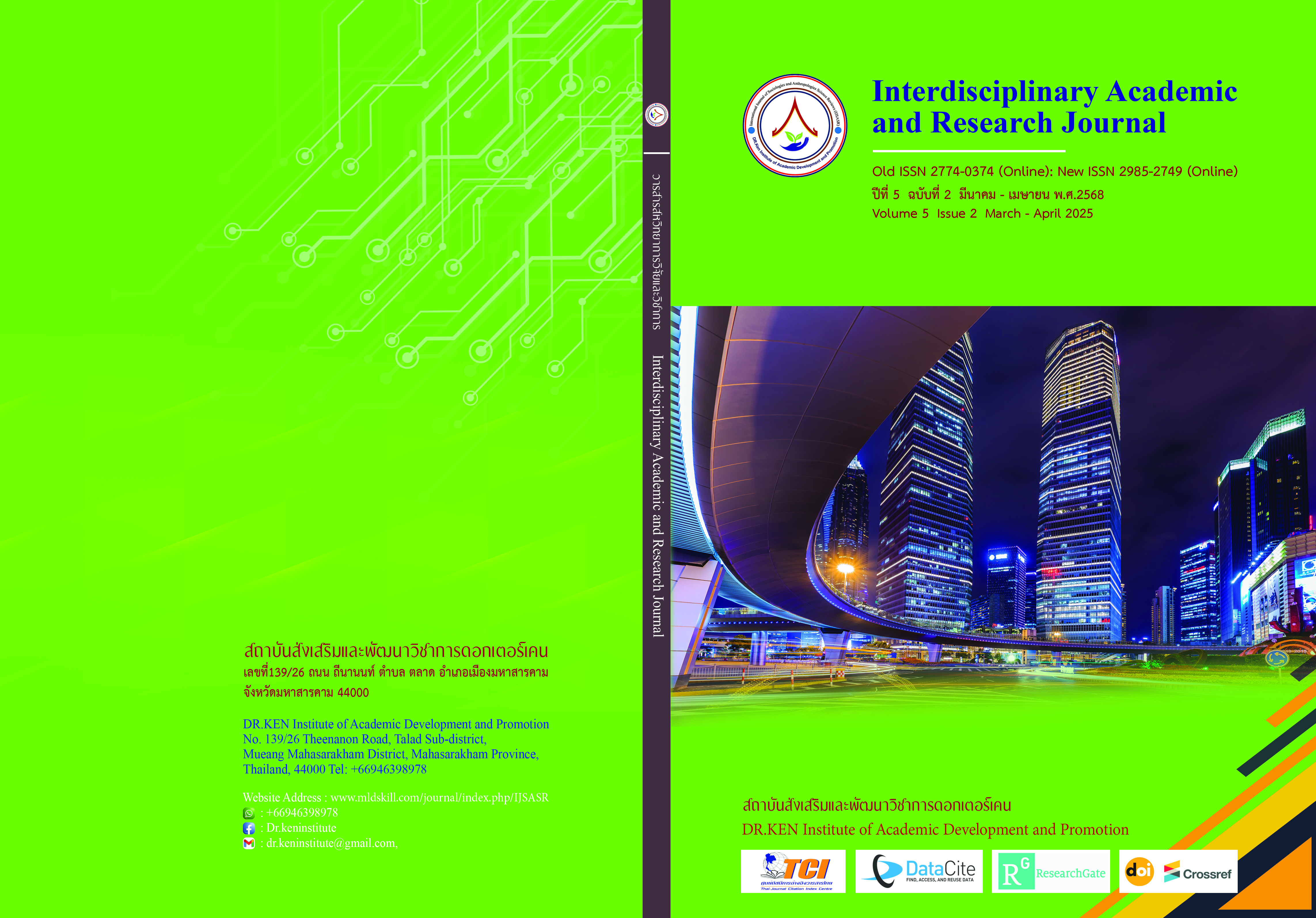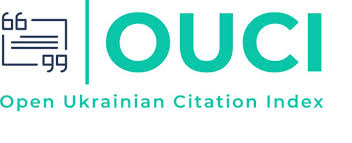Effect of SAQ Training Program on the Performance of Wushu Taolu Athletes
DOI:
https://doi.org/10.60027/iarj.2025.281821Keywords:
The SAQ Program, Performance, Wushu Taolu AthleteAbstract
Background and Aims: SAQ training uses principles of training in the relationship between the nervous system and muscles. The central nervous system and muscles can work together to perform difficult movements more efficiently. The research aimed to 1) develop a training program by using the SAQ (Speed, Agility, Quickness) for Wushu Taolu athletes, 2) study the effects of the SAQ training program on the specific physical fitness of Wushu Taolu athletes, and 3) compare the effects of the SAQ training program before and after training on the specific physical fitness of Wushu Taolu athletes.
Methodology: This research is a quasi-experimental study with a single group measured repeatedly. The population consists of 12 Wushu athletes specializing in the performance category, selected through purposive sampling. The training program, based on the SAQ (Speed, Agility, Quickness) model, lasted for 8 weeks, with training sessions held three times a week on Mondays, Wednesdays, and Fridays. Data collection involved testing physical fitness in terms of speed, agility, and quickness before the training, after 4 weeks of training, and after 8 weeks of training. The data were analyzed by calculating the mean and standard deviation to assess differences and using one-way repeated measures ANOVA, followed by pairwise analysis using Bonferroni.
Results: 1) Results of training with the SAQ program that affects specific physical fitness of Wushu athletes. Martial arts category: speed, 40-meter running, for Wushu athletes Types of martial arts that are the population Before training, the average running time was 10.96 seconds. After training with the SAQ program in the 4th week the time spent running decreased by an average of 9.40 seconds, and after training in the 8th week, the time spent running decreased by an average of 7.48 seconds. 2) In the agility test, the average time before training was 17.05 seconds; after 4 weeks, the average time decreased to 15.01 seconds, and after 8 weeks, it decreased to 11.23 seconds. 3) In the quickness test, the average time before training was 1.87 seconds; after 4 weeks of SAQ training, the average time decreased to 1.78 seconds, and after 8 weeks, it further decreased to 1.40 seconds. 4) The comparison of training durations showed significant effects on speed, agility, and quickness of Wushu Taolu athletes at the statistical significance level of .05
Conclusion: Comparing the results of different training periods affecting specific physical abilities, speed, agility, and speed of Wushu athletes. The martial arts type has statistical significance at the .05 level. And when considering the pairwise comparison of the duration of training in different periods. Using the Bonferroni test method, it was found that increased training time resulted in better results for Wushu athletes. The martial arts type has speed. Agility and sensitivity increased significantly at the .05 level in all training sessions.
References
การกีฬาแห่งประเทศไทย. (2553). วิทยาศาสตร์การกีฬา ฟุตบอล. กรุงเทพฯ: ศูนย์วิทยาศาสตร์ การกีฬาการกีฬาแห่งประเทศไทย.
จิระวัฒน์ ศิริจารุวงศ์. (2550). การสร้างเกณฑ์ปกติสมรรถภาพทางกายเพื่อสุขภาพสำหรับนักศึกษามหาวิทยาลัยเทคโนโลยีราชมงคลธัญบุรี. วิทยานิพนธ์ศิลปศาสตรมหาบัณฑิต สาขาพลศึกษา, มหาวิทยาลัยเกษตรศาสตร์.
เจริญ กระบวนรัตน์ (2545). หลักการและเทคนิคการฝึกกรีฑา. กรุงเทพฯ: สำนักพิมพ์มหาวิทยาลัย เกษตรศาสตร์.
ถาวร กมุทศรี. (2560). การเสริมสร้างสมรรถภาพทางกาย. กรุงเทพฯ: หจก. มีเดีย เพรส.
เทิดทูล โตคีรี. (2561). ผลการฝึกด้วยโปรแกรมการฝึก เอส เอ คิว ที่มีต่อความคล่องแคล่วว่องไว และความสามารถในการเลี้ยงลูกฟุตซอลของนักกีฬาฟุตซอลระดับอุดมศึกษา. มนุษยศาสตร์. 24(2), 70-83.
ธวัช วีระศิริวัฒน์. (2538). หลักและการฝึกกีฬา. กรุงเทพฯ: โอเดียนสโตร์.
วรนารถ ดิษยบุตร. (2553). คู่มือผู้ฝึกสอนกีฬาวูซู. กรุงเทพฯ: สมาคมกีฬาวูซูแห่งประเทศไทย
วุฒิพงษ์ ปรมัตถากร และอารี ปรมัตถากร (2542) . วิทยาศาสตร์การกีฬา. กรุงเทพฯ : ไทยวัฒนาพานิช.
ศิริรัตน์ หิรัญรัตน์. (2539). การฝึกความสมบูรณ์ทางกาย. กรุงเทพฯ: มหาวิทยาลัยมหิดล.
สนธยา สีสะมาด. (2547). หลักการฝึกกีฬาสาหรับผู้ฝึกสอนกีฬา. กรุงเทพฯ: จุฬาลงกรณ์มหาวิทยาลัย.
สยามสปอร์ต. (2565). ทัพนักกีฬาจีนคว้าทองแรกวูซูศึกกีฬามหาวิทยาลัยโลก. Retrieved from: https://www.siamsport.co.th/other-sports/sports-world/27287/
สุขสวัสดิ์ ชนะพาล. (2550). ผลของการฝึกเสริมด้วยโปรแกรมการฝึกความคล่องแคล่วว่องไว ที่มีต่อความสามารถในการเลี้ยงลูกฟุตบอลของนักกีฬาฟุตบอล อายุ 12-14ปี. วิทยานิพนธ์ปริญญามหาบัณฑิต (สุขศึกษาและพลศึกษา), คณะครุศาสตร์ จุฬาลงกรณ์มหาวิทยาลัย.
สุปราณีว์ ขวัญบุญจันทร์. (2555). ผลการฝึกเอส เอ คิว ที่มีต่อความสามารถของนักกีฬาปัญจักสีลัตทีมชาติไทย. วารสารคณะพลศึกษามหาวิทยาลัยศรีนครินทรวิโรฒ. 15 (S), 471-476
เสน่ห์ ศรีงาม. (2566). ผลของการฝึกรูปแบบ เอสเอคิว ในด้านความเร็ว ความคล่องตัว และความว่องไว ของนักฟุตบอลหญิง. วารสารครุศาสตร์ปัญญพัฒน์ มหาวิทยาลัยราชภัฏสุรินทร์, 1(1), 77-91.
American College of Sports Medicine. (1998). ACSM Fitness Book. Illinois: Leisure Press.
Azmi, K., & Kusnanik, NW. (2018). Effect of Exercise Program Speed, Agility, and Quickness (SAQ) in Improving Speed, Agility, and Acceleration. Journal of Physics Conference Series, 947(1), 012043.
Berlin, S. (1983). Track and Field. Illinois: German Democratic Republic
Clarke, H. H. (1976). Application of Measurement to Health and Physical Education. 5th edition. New Jersey: Prentice-Hall, Inc.
Denigis, T. (2016). Play Faster: Speed, Agility & Quickness for Soccer. Page Publishing, Inc.
Getchell, B. (1979). Physical fitness: A way of life. 2nd ed. John Wiley and Sons, Inc. USA.
Hale, J. (2006). Skill: Quickness Training. Retrieved January 3, 2019, From http://www.sportsocience.or.th/enx/images/stories/journal/jsst_1.pdf
Johnson, P., & Stolberg, B. (1971). Conditioning Englewood Cliffs. New Jersey: Prentice Hall, Tne.
Nageswaran, A. S. (2013). Effect of SAQ training on speed agility and balance among intercollegiate athletes. International Journal of Scientific Research, 2(1), 1-2.
Sarmento, H., Marcelino, R., Anguera, M.T., CampaniÇo, J., Matos, N., LeitÃo, J.C. (2014). Match analysis in football: a systematic review. J Sports Sci. 32(20), 1831-1843. doi: 10.1080/02640414.2014.898852.
Downloads
Published
How to Cite
Issue
Section
License
Copyright (c) 2025 Interdisciplinary Academic and Research Journal

This work is licensed under a Creative Commons Attribution-NonCommercial-NoDerivatives 4.0 International License.
Copyright on any article in the Interdisciplinary Academic and Research Journal is retained by the author(s) under the under the Creative Commons Attribution-NonCommercial-NoDerivatives 4.0 International License. Permission to use text, content, images, etc. of publication. Any user to read, download, copy, distribute, print, search, or link to the full texts of articles, crawl them for indexing, pass them as data to software, or use them for any other lawful purpose. But do not use it for commercial use or with the intent to benefit any business.
















.png)


